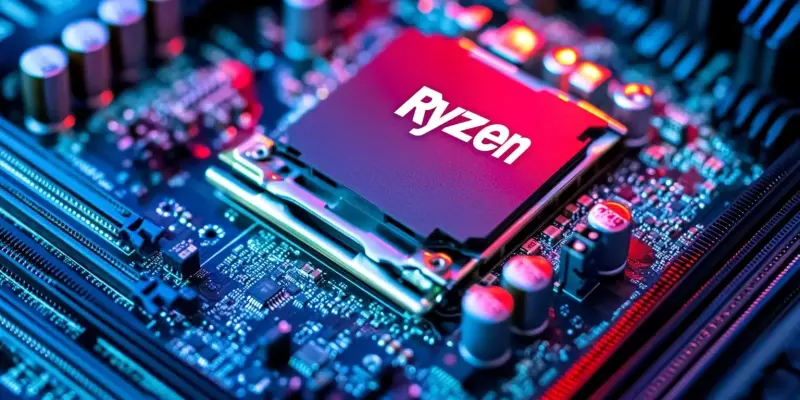The tech community has faced a growing concern as AMD’s Ryzen 9950X3D and 9800X3D CPUs experience a series of failures, particularly when used with ASRock motherboards. This recurring issue has raised alarms, as another 9950X3D has recently failed in an ASRock motherboard. The current situation involves over 100 reported incidents with 9800X3D CPUs as well. While a variety of motherboards have been implicated, ASRock stands out with frequent mentions, prompting investigations into compatibility with X3D CPUs.
The Extent of the Problem
Initial signs of failure are particularly troubling, as affected CPUs commonly fail to boot and display burn marks on both the underside and the CPU socket. This pattern suggests significant underlying quality issues either with AMD’s design of the X3D series CPUs or with specific motherboard brands, with ASRock being most frequently identified. The failures suggest intricate interactions between the CPUs and the motherboard circuitry that may not have been fully anticipated during development and testing phases. With these failures becoming increasingly widespread, users and industry experts alike are calling for immediate and thorough investigations.
In response to these ongoing failures, ASRock has adopted a proactive stance by actively contacting affected users and rolling out BIOS updates intended to mitigate the problem. The brand’s efforts include a thorough examination for possible causes such as socket debris. This engagement with users indicates a commitment to resolving the issue; however, it also highlights the urgency for both ASRock and AMD to identify the root cause and prevent future incidents. The recurring nature of these failures reinforces the importance of stringent quality control measures in CPU and motherboard manufacturing.
Addressing User Concerns
User feedback has been instrumental in shaping ASRock’s response to the situation. One affected user reported a positive experience with ASRock’s support team, who have demonstrated a willingness to engage deeply with the problem, even considering purchasing PC parts from users for more in-depth testing. This level of customer support is commendable and stands in contrast to claims that ASRock might be ignoring the issue. It suggests a dedicated effort to not just patch the problem temporarily but to understand and solve it fundamentally.
The broader implications of such recurring CPU failures go beyond mere user inconvenience. They affect brand trust and can influence purchasing decisions within the competitive tech market. As users become more vocal about their experiences, ASRock’s reputation is at stake. Timely and effective solutions are crucial to maintaining consumer confidence. Moreover, the role of user involvement highlights the importance of community feedback in addressing complex technical issues, emphasizing a more transparent and responsive approach by manufacturers.
Moving Forward
The tech community is becoming increasingly concerned as AMD’s Ryzen 9950X3D and 9800X3D CPUs continue to experience failures, particularly when paired with ASRock motherboards. This ongoing issue has recently been highlighted by yet another failure of a 9950X3D within an ASRock motherboard, adding to a troubling trend. Reports indicate that there have been over 100 incidents involving the 9800X3D CPUs as well. While various other motherboards have also been reported in these failures, ASRock models are mentioned with notable frequency. This pattern has led to detailed investigations into the compatibility issues between these motherboards and the X3D CPUs. Addressing this compatibility challenge is crucial, as it impacts a wide segment of AMD’s user base. The tech community is actively seeking solutions to ensure that these premium processors can operate reliably across different motherboard brands, with a keen focus on resolving the issues seen with ASRock.

